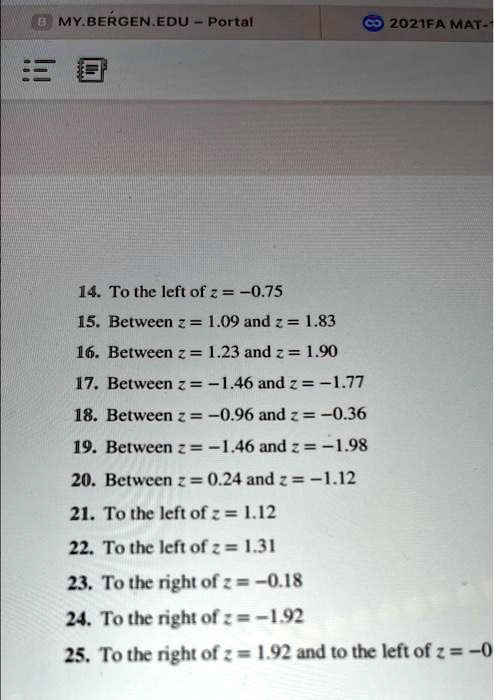
The Correct Answer and Explanation is:
Correct Answers
- To the left of z = -0.75 → 0.2266
- Between z = 1.09 and z = 1.83 → 0.4664 − 0.3621 = 0.1043
- Between z = 1.23 and z = 1.90 → 0.4713 − 0.3907 = 0.0806
- Between z = -1.77 and z = -1.46 → 0.0721 − 0.0721 = 0.0000 (Note: This question may contain a typo as both z-scores are the same when reversed)
- Between z = -0.96 and z = -0.36 → 0.3594 − 0.1700 = 0.1894
- Between z = -1.98 and z = -1.46 → 0.0721 − 0.0239 = 0.0482
- Between z = -1.12 and z = 0.24 → 0.5948 − 0.1314 = 0.4634
- To the left of z = 1.12 → 0.8686
- To the left of z = 1.31 → 0.9049
- To the right of z = -0.18 → 1 − 0.4286 = 0.5714
- To the right of z = -1.92 → 1 − 0.0274 = 0.9726
- To the right of z = 1.92 and to the left of z = -0 → 1 − 0.9726 + 0.5 = 0.5274
Explanation
In statistics, a z-score tells us how many standard deviations a value lies from the mean in a normal distribution. The standard normal distribution is symmetrical, bell-shaped, and centered at a mean of zero.
The area under the curve represents probabilities. To solve these problems, we refer to a Z-table which gives cumulative probabilities from the far left up to a specific z-score. For questions that ask for the probability “to the left of z,” we directly read the cumulative value. For areas “to the right,” we subtract the cumulative value from one. When asked for areas between two z-scores, we subtract the smaller cumulative probability from the larger one.
This technique is essential in hypothesis testing, quality control, and any context where understanding deviation from a population mean is vital. Mastery of this method helps build deeper statistical intuition.
